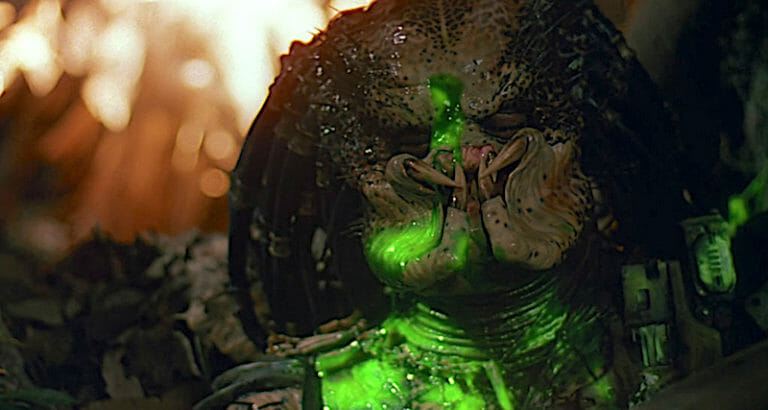By Ken Miyamoto · June 13, 2019

Are the best villains in screenplays invulnerable or vulnerable?
Welcome to our ongoing Learning from the Masters and Industry Insiders series where we seek out and feature excellent videos, interviews, and discussions of the art, craft, and business of screenwriting and pull the best words of wisdom, writing tips, and screenwriting advice.
To answer this question of choosing between invulnerable and vulnerable villains — and which ones are better — we turn to The Closer Look‘s How Not to Reboot a Movie video, where they break down the elements of why Shane Black’s 2018 The Predator failed as a sequel and attempted reboot of the franchise.
More than halfway into the video, they make excellent points about invulnerable and vulnerable villains, and which are more engaging to the audience.
Here we break down the points they make so you can apply those lessons learned to your own villains.
In the 1987’s Predator, the predator was vulnerable to the attack of the soldiers, leading to a higher sense of tension. In 2018’s The Predator, the predator was invulnerable. Almost nothing could hurt him. And because of that, the tension was low.
In 1987’s Predator, upon first sight of the predator, the soldiers unleash thousands of rounds ammunition into the jungle as the predator flees. They only hit him once. However, this leaves a single discharge of alien blood on a nearby plant.
Later on, we see the predator tending to his wound.
He’s vulnerable. He’s not bulletproof. All that it would take to kill him are a few well-placed shots. That is why the predator is so evasive. He hits and runs. This adds added tension to each scene that he is involved in. We know that he’s mortal and can be killed. However, we don’t know if his skills and weaponry will kill another one of the soldiers we’ve grown to care about.
In 2018’s The Predator, that sense of vulnerability within the villain is completely ignored and lost — and thus is the tension that the original film had as well.
This new predator is bulletproof. In one sequence, he is shot by a plasma rifle, gets set on fire, gets shot point blank in the back with an assault rifle, is stabbed a dozen times more in the back, gets hit directly with a grenade launcher, and then falls a great height into a hole. And he still survives.
When it’s obvious that the villain can’t be defeated, the audience disengages from the scene. There’s no hope and there’s no tension.
If there’s even a tiny bit of chance that the hero can kill the villain in a fight, it adds to the tension and suspense of the scene.
So it’s clear that the villain that creates the most tension is one that is vulnerable.
Watch the full video below to learn even more the mistakes and missteps that 2018’s The Predator made, and how you can apply those lessons you’ve learned to your own writing.
For all the latest from The Script Lab, be sure to follow us on Twitter, Facebook, and Instagram.
And become a member of TSL 360 to enjoy the LARGEST screenwriting education content library, featuring masterclasses, deep-dive interviews, and lectures from Academy Award-winning screenwriters, TV show-runners, producers, literary managers, agents, studio executives, and leading educators – all in one place.